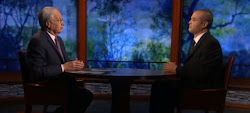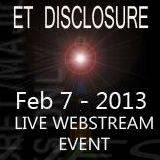A new twist on life
By Clive CooksonPublished: August 10 2009 22:45 | Last updated: August 10 2009 22:45

Biology is approaching its Frankenstein moment – the creation of life from scratch. Sometime within the next few months, scientists are likely to announce that they have made a living cell from chemical ingredients that can be bought off the shelf.
While his scientists at the J. Craig Venter Institute outside Washington DC are aiming to build an existing organism from first principles, others are experimenting with artificial biology unlike anything in nature. Researchers at the Foundation for Applied Molecular Evolution in Florida have created an alternative genetic code with synthetic DNA that has six chemical letters instead of the four letters of natural DNA.
“This is the first example of an artificial chemical system capable of Darwinian evolution,” says Steven Benner, the research leader. At present, students have to feed it chemicals to keep going but he hopes it will be both evolving and self-sustaining within a couple of years – a primitive form of synthetic life.
Dr Venter’s microbe and Dr Benner’s artificial DNA are particularly eye-catching projects within the fast-growing and wide-ranging scientific enterprise that goes by the name of synthetic biology. Molecular biologists have been transferring genes between species, one at a time, since the 1970s; their work has given us genetically modified crops and biotechnology drugs. Synthetic biology is extending simple genetic engineering into something much more ambitious, by manipulating whole living systems to transform existing organisms or create new ones.
While the field will offer basic insights into the nature of life, for example to “exobiologists” looking for organisms on other planets, most synthetic biologists are interested in practical uses, particularly for healthcare, energy and the environment. Besides a host of medical applications, there is much excitement about the prospects for producing new biofuels through synthetic biology.
A resounding endorsement of the technology’s commercial potential came last month with the announcement that Exxon, the US oil giant, and Synthetic Genomics, Dr Venter’s company, were setting up a $600m (€423m, £361m) partnership to make biofuels from genetically engineered algae. Synthetic biology will be essential for the project’s long-term success, says Dr Venter: “It’s the only way we can change the yield far beyond nature, and make the algae resistant to virus attacks and so on.”
Synthetic Genomics (a separate enterprise to the more academic Venter Institute where the artificial microbe is under construction) has already engineered strains of algae that secrete oil from their cells. This should permit continuous production of fuels in a bioreactor – more efficient than the traditional process of harvesting algae from a pond and then extracting the oil.

The next steps will involve further screening of natural algae to find strains that are particularly efficient at using energy from sunlight to convert carbon dioxide into oils. Then researchers will extensively alter their DNA to boost the yield and alter the composition of the oils, to make them as similar as possible to refined fuels. But Dr Venter warns that it will probably be 10 years before products from the project reach the market.
Biofuels may be the most visible tip of commercial synthetic biology but a vast number of other applications beckon. One of the most important will be to make drugs that are inaccessible through conventional chemistry and biology.
The leading demonstration of synthetic biology in medicine has been under way for five years at the University of California, Berkeley, under the auspices of OneWorld Health, a non-profit company that develops drugs for neglected infectious diseases. Jay Keasling, research leader, has extensively re-engineered yeast – changing several genes and biological pathways – to produce artemisinin, the most effective treatment for malaria, in a microbial fermenter. Mass production of affordable artemisinin could start next year in collaboration with Sanofi-Aventis, the French drug company. At present artemisinin is expensive and in short supply because its only source is sweet wormwood, a Chinese medicinal plant. Professor Keasling’s slogan is: “With the tools of synthetic biology we don’t have to just accept what nature has given us.”
“We have hardly scratched the surface of what biotechnology can do,” says Drew Endy, a bioengineer at Stanford University in California. “To ask about the applications of synthetic biology today is like asking Von Neumann [the computing pioneer] in 1952 what the applications of computers would be.”
A feature of synthetic biology is the core role played by engineers such as Professor Endy. They are introducing a discipline and rigour that is missing from most of bioscience. Paul Freemont, co-director of the Centre for Synthetic Biology and Innovationat Imperial College London, says the aim over the next 20 years is to give synthetic biology the precision of electronics. “Our understanding of how living cells work isn’t as good as our understanding of electronic devices,” he says. “We want to get to the stage where we’ve got all the parts we need to build any biological machine that we want.”
Hundreds of standard biological parts are already available through the non-profit BioBricks Foundation, established by Prof Endy and other synthetic biologists. BioBricks are DNA sequences that encode basic biological functions. The idea is that eventually the function of each part should be documented as well as a computer component with a specification sheet. Users could then fit together BioBricks and other standard genetic units to do anything they want.ALGAE TO BIOFUEL, YEAST TO DRUG
The US leads the world in both the basic science and the early commercialisation of synthetic biology, according to a recent report by the UK’s Royal Academy of Engineering.
Synthetic biology companies fall into two categories. One group provides synthetic genes and reagents for research. Companies making synthetic DNA include Blue Heron Biotechnology and DNA2.0 in the US and Geneart in Germany. The second and more varied group is working to apply synthetic biology – with biofuels the most popular field.
Synthetic Genomics, the company founded in California by genomics pioneer Craig Venter, is the leader here. It is working with two oil majors: with Exxon on algae to produce biofuels and with BP on microbes to help extract natural gas from coal seams.
Other US companies developing biofuels through synthetic biology include LS9, Solazyme, Mascoma and Gevo. Verdezyne and Codexis focus on chemicals manufacturing while maintaining an interest in biofuels. Verdezyne is developing new routes to products currently made from petrochemicals, while Codexis makes “super-enzymes” by reshuffling microbial DNA.
Amyris, a spin-out from Jay Keasling’s laboratory at the University of California, Berkeley, works on biofuels too but has an interest in drug development. The company has been involved in re-engineering yeast to make artemisinin, the anti-malarial drug.
We are still a long way from such precision today. But undergraduates are already making extensive use of standard biological parts, through the annual International Genetically Engineered Machine competition launched in 2005. Their accomplishments include artificial blood, a biological sensor to detect arsenic and bacteria that can act as “living computers” to solve mathematical problems in lab dishes. This year, 120 student teams from all over the world are taking part.
Any technology with the power of synthetic biology is bound to arouse concerns about what happens if things going wrong – by accident or through abuse. In an echo of the concerns voiced in the mid-1970s when biologists first discovered how to transfer a gene between organisms, activists say synthetic biology could unleash superbugs with devastating environmental consequences. They have also expressed fears about the technology’s potential use by bioterrorists, the creation of unfair monopolies by patenting synthetic organisms, and the impact on trade and social justice.
For example ETC , a pressure group based in Toronto, is particularly concerned about corporate exploitation of what it calls “extreme genetic engineering”. “Although most people have never heard of synthetic biology, it is moving full speed ahead, fuelled by giant agribusiness, energy and chemical corporations with little debate about who will control the technology, how it will be regulated (or not) and despite grave concerns surrounding the safety and security risks of designer organisms,” says Pat Mooney of ETC.
Synthetic biology is a quintessential “dual-use” technology – with broad and varied beneficial applications but also capable of being turned to nefarious, destructive use. The thought of terrorists assembling a superbug from BioBricks is unsettling, though a report last month by Britain’s Parliamentary Office of Science and Technology concluded: “Many UK scientists and non-proliferation experts believe that the terrorism risk from cutting-edge DNA synthesis has been overstated in the US.”
In the face of such concerns – and quasi-religious ethical issues about creating artificial life – many synthetic biologists are making a big effort to explain their research to the public and engage with critics.
Prof Endy, for instance, has held an open debate with ETC. The University of California, Berkeley, has made public engagement a formal part of its synthetic biology centre. Dr Venter has involved bioethicists in his work from the start. In the UK, the Royal Society, the Royal Academy of Engineering and the country’s research councils (which channel public funds into science) are working hard to draw the issues to public attention.
Meanwhile the pace of research accelerates. Last week, for example, Harvard biologists published in the journal Nature an ultra-fast new way to transform bacterial genomes. If all goes well, Frankenstein will not be the best metaphor for synthetic biologists; they may be more like Pandora opening her box – but releasing the hope without the woe.
Copyright The Financial Times Limited 2009.





No comments:
Post a Comment